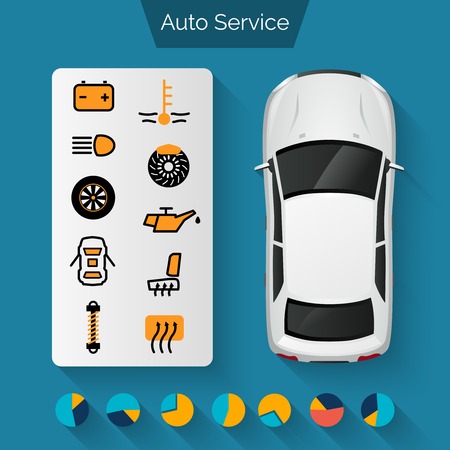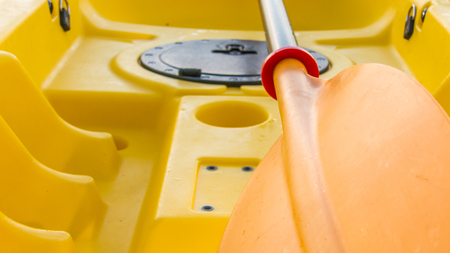1. Understanding When to Replace Your Car Tyres
Knowing when to replace your car tyres is crucial for staying safe and compliant with UK law. Driving with worn or damaged tyres not only increases the risk of accidents but can also lead to hefty fines and penalty points. Here’s what every UK driver should know:
Legal Tyre Requirements in the UK
The minimum legal tread depth for car tyres in the UK is 1.6mm across the central three-quarters of the breadth of the tyre, and around the entire circumference. It’s recommended, however, to consider replacing your tyres once tread depth drops below 3mm to maintain optimal grip and safety, especially during wet conditions.
| Requirement | Legal Standard | Recommended Action |
|---|---|---|
| Minimum Tread Depth | 1.6mm (legal) | Replace at 3mm for best safety |
| Tyre Pressure | As per vehicle manufacturer | Check monthly or before long journeys |
| Tyre Condition | No cuts, bulges, or exposed cords | Inspect regularly for damage |
Key Signs Your Tyres Need Replacing
- Tread Wear Indicators: Most tyres have wear indicators built into the tread. If these are flush with the surface, it’s time for a change.
- Visible Damage: Look out for cracks, bulges, or objects embedded in the tyre.
- Vibration or Unusual Noises: These can signal internal damage or uneven wear.
- Punctures or Repairs: Not all punctures can be safely repaired; sidewall damage often means replacement is needed.
How to Check Your Tyre Condition Regularly
- Tread Depth: Use a 20p coin – insert it into the main grooves. If you can see the outer band, your tread is likely below 1.6mm.
- Visual Inspection: Walk around your vehicle every couple of weeks and before long drives to look for obvious damage or uneven wear.
- Tyre Pressure: Check at least once a month using a reliable gauge or at petrol stations – under-inflated tyres wear faster and affect fuel efficiency.
- Date Code: Tyres older than six years (check the four-digit code on the sidewall) should be considered for replacement, even if they appear unworn.
Regular tyre checks not only keep you within the law but also protect your investment in both your car and insurance premiums by reducing accident risk. In the next section, we’ll guide you through choosing the right replacement tyres for your vehicle.
Choosing the Right Tyres for UK Roads
When it comes to replacing your car tyres in the UK, choosing the correct set is crucial for both safety and performance. The unpredictable British weather, varying road surfaces, and strict tyre labelling regulations all play a part in your selection process. Lets explore the key considerations to help you make an informed decision.
Weather Conditions: Summer vs Winter vs All-Season Tyres
The UK experiences a wide range of weather conditions, from heavy rain to occasional snowfall. Selecting tyres designed for these variations can significantly impact your driving experience.
| Tyre Type | Best For | Key Features |
|---|---|---|
| Summer Tyres | Mild to warm months (April–September) | Optimised grip on dry and wet roads; not suitable for freezing temperatures |
| Winter Tyres | Cold weather (below 7°C), snow, ice | Softer rubber compound; improved traction in cold and slippery conditions |
| All-Season Tyres | Year-round use in moderate climates | Balanced performance; convenient but may not excel in extreme weather |
Understanding UK Road Types
Consider the primary roads you drive on. Motorways and A-roads require tyres with enhanced durability and fuel efficiency, while rural and uneven roads benefit from reinforced sidewalls and deeper treads for better grip. Urban drivers may prioritise low-noise tyres for city commutes.
Matching Tyre Ratings to Your Driving Style
Your car’s manual will specify recommended tyre sizes and speed/load ratings. These ratings are important as they reflect the maximum speed and weight capacity your tyres can safely handle. Always adhere to these guidelines to avoid insurance or legal complications.
Tyre Labelling Regulations in the UK
The UK follows strict EU-derived tyre labelling standards, which provide essential information at a glance:
| Label Category | Description |
|---|---|
| Fuel Efficiency (A–E) | A-rated tyres offer lower rolling resistance, saving fuel costs over time. |
| Wet Grip (A–E) | A-rated provides shorter braking distances on wet roads—crucial for UK’s rainy climate. |
| Noise Level (dB) | Indicates external tyre noise; quieter tyres are marked with fewer black waves. |
Insurance Tip:
Selecting the right tyres not only enhances safety but can also impact your insurance premiums. Insurers may view cars fitted with inappropriate or worn-out tyres as higher risk, potentially affecting claims validity or leading to higher premiums.

3. Comparing Providers and Getting Quotes
When it comes to replacing your car tyres in the UK, knowing where to shop is half the battle. There are three main types of providers you should consider: local independent garages, high street chains, and online tyre retailers. Each has its own pros and cons regarding price, service quality, and convenience.
Local Garages vs High Street Chains vs Online Retailers
| Provider Type | Advantages | Potential Drawbacks |
|---|---|---|
| Local Garages | Personalised service, flexible scheduling, often open to negotiation on prices | Limited stock or brand selection, variable service standards |
| High Street Chains (e.g., Kwik Fit, Halfords) | Nationwide presence, set pricing, promotions or loyalty schemes | Less room for negotiation, busy during peak times |
| Online Retailers (e.g., Blackcircles, Tyre Shopper) | Wide variety, competitive prices, easy comparison shopping | No face-to-face advice before purchase, fitting may be at a partner garage |
How to Get the Best Quotes
- Start by checking review sites and asking friends for recommendations. Reputation matters when it comes to both quality and trust.
- Use online comparison tools to check prices from different suppliers in your area. Many online retailers allow you to enter your postcode and get instant quotes including fitting.
- If youre considering a local garage or chain, give them a ring for a direct quote—sometimes they can match or beat online prices if you ask.
Key Considerations When Comparing Quotes
- Make sure all quotes include VAT, tyre disposal fees, and fitting costs.
- Check if there are additional perks such as free wheel balancing or alignment checks included in the price.
- If you require specific brands or models of tyres due to your car insurance policy or manufacturer recommendations, confirm availability before committing.
Top Tip:
If you’re looking for extra savings, keep an eye out for seasonal promotions—many UK retailers run discounts around bank holidays and during quieter months. By taking time to compare thoroughly, youll ensure you get reliable tyres at the best possible value.
4. Booking and Preparing for Tyre Replacement
Once you’ve decided it’s time to replace your car tyres, the next step is to book an appointment with a reputable garage or mobile tyre fitting service. In the UK, there are several ways to arrange tyre replacement, each offering different levels of convenience and price points.
How to Book Your Tyre Replacement
Most UK motorists book their tyre replacements online or over the phone. Many national chains—such as Kwik Fit, Halfords Autocentres, and ATS Euromaster—offer user-friendly booking platforms on their websites. You can also opt for local independent garages or mobile fitters who come directly to your home or workplace.
Information Youll Need When Booking
| Required Information | Details |
|---|---|
| Your vehicle registration number (VRN) | This helps ensure the correct tyre size and specification are selected |
| Current tyre size | Usually printed on the tyre sidewall (e.g., 205/55 R16 91V) |
| Preferred date and time | Choose a slot that suits your schedule; mobile fitters offer more flexibility |
| Type of tyres required | Decide between budget, mid-range, or premium brands, and consider seasonal options if needed |
Preparing Your Vehicle for the Appointment
- Clear access to all wheels: If you’re using a mobile service, ensure your vehicle is parked in an accessible spot with enough space around each wheel.
- Remove any wheel locks: If your wheels are fitted with locking nuts, make sure you have the locking key available for the technician.
- Check boot contents: Some cars store spare tyres or tools in the boot—clear this area so technicians can access what they need.
Top Tip:
If your insurance policy includes breakdown cover or accidental damage, inform your insurer when replacing tyres. It ensures any future claims aren’t impacted by recent maintenance work.
5. What to Expect During Tyre Fitting
When you arrive at a UK tyre fitting centre, the process is designed to be efficient, safe, and customer-friendly. Here’s what you can typically expect:
Step-by-Step Tyre Fitting Process
- Initial Inspection: The technician will check your existing tyres and confirm the new tyres you’ve selected.
- Vehicle Preparation: Your car will be securely lifted using a hydraulic jack or lift to ensure safety during the fitting process.
- Wheel Removal: All wheels with tyres to be replaced are removed from your vehicle.
- Old Tyre Removal: Each old tyre is carefully removed from its rim using specialised equipment.
- New Tyre Installation: New tyres are fitted onto the rims and inflated to the manufacturer’s recommended pressure.
- Balancing: Each wheel is balanced using weights to prevent vibrations and ensure smooth driving.
- Refitting Wheels: The balanced wheels are refitted to your vehicle and secured with the correct torque settings.
- Final Safety Checks: Technicians will check for any leaks, confirm all nuts are tightened correctly, and often inspect brakes and suspension components as a courtesy.
Typical Timescales for Tyre Replacement
| Number of Tyres | Estimated Time Required |
|---|---|
| 1 Tyre | 20–30 minutes |
| 2 Tyres | 30–45 minutes |
| 4 Tyres | 45–60 minutes |
Additional Services Often Provided in the UK
- Free Safety Checks: Many centres offer complimentary checks on brakes, alignment, and suspension.
- Coffee or Waiting Area: Most UK garages provide a comfortable waiting area with refreshments while your car is serviced.
- Tread Depth Reports: Some centres supply a report detailing the remaining tread on your other tyres for future planning.
- Puncture Repair Advice: If your old tyre was damaged by a puncture, technicians may advise on repairability or prevention tips for next time.
A Few Extra Tips for UK Motorists
If you use run-flat tyres or drive an electric vehicle, let the technician know in advance as these may require specialist handling. Always check if your chosen centre recycles old tyres responsibly—a common environmental practice across the UK. Finally, keep your receipt as proof of fitting; this may be required for certain insurance claims or warranty purposes.
6. Aftercare and Tyre Maintenance Tips
Now that you’ve successfully replaced your car tyres, it’s important to maintain them properly to ensure safety, extend their lifespan, and comply with UK laws. Here are essential aftercare and maintenance tips every driver should follow:
Regular Legal Checks
Under UK regulations, tyre tread depth must be at least 1.6mm across the central three-quarters of the tyre. Failing to meet this requirement can result in a hefty fine and penalty points on your licence. It’s wise to check your tread depth monthly using a 20p coin or a dedicated gauge.
Tread Depth Check Table
| Check Method | How Often | What to Look For |
|---|---|---|
| 20p Coin Test | Monthly | If outer rim is visible, replace tyres |
| Tread Depth Gauge | Monthly | Reading below 1.6mm means illegal tyre |
Tyre Pressure Monitoring
Maintaining the correct tyre pressure improves fuel efficiency, handling, and tyre longevity. Always check pressures when tyres are cold, and refer to your vehicle’s manual or the sticker inside the driver’s door for recommended levels. Many UK cars come equipped with a Tyre Pressure Monitoring System (TPMS); pay attention to dashboard warnings and address issues promptly.
Safe Storage of Spare or Seasonal Tyres
If you use winter or summer tyres, store off-season sets in a cool, dry place away from direct sunlight and chemicals. Stack tyres horizontally if they’re off the rims, or vertically if mounted on wheels. Cover them to protect from dust and moisture.
Tyre Storage Best Practices Table
| Storage Condition | Recommendation |
|---|---|
| Location | Cool, dry, shaded area |
| Position (unmounted) | Stack horizontally (flat) |
| Position (mounted) | Store vertically (upright) |
| Covers/Protection | Use tyre bags or covers; avoid direct contact with oil or solvents |
Additional Tips for Tyre Longevity
- Wheel Alignment: Get your alignment checked annually or if you notice uneven wear.
- Rotation: Rotate tyres every 6,000-8,000 miles to promote even wear.
- Avoid Kerbs: Try not to scrape against kerbs when parking as this can damage sidewalls.
- Inspect Regularly: Look out for cuts, bulges or embedded objects and address issues immediately.
By following these aftercare steps, you’ll maximise the performance and safety of your new tyres while staying compliant with UK motoring laws.


